Ivan Lyubushkin. Tanker, hero of the Moscow battle
T-34 Katukov brigade in the winter of 1941-1942 near Moscow
Soviet tank aces. Lyubushkin Ivan Timofeevich - one of the Soviet tank aces who were not destined to survive to victory. He died in battles with the Nazi forces in the difficult summer of 1942.
Like many Soviet tank aces, Lyubushkin began the war in June 1941, distinguishing himself during the battles near Moscow as part of the 4th tank brigade of Mikhail Efimovich Katukov. The Katukov brigade seriously slowed the advance of the 4th German Panzer Division from Orel to Mtsensk for almost a week, inflicting serious losses on the enemy. For participation in these battles, Ivan Lyubushkin was introduced to the title of Hero of the Soviet Union.
Way to the tank crew of Ivan Lyubushkin
Ivan Timofeevich Lyubushkin was born in 1918 in the Tambov province in a small village called Sadovaya. His parents were ordinary poor peasants. In his native village, Ivan Lyubushkin graduated from elementary school, and received his completed seven-year schooling in the village of Sergievka. The family of the future hero of the war did not live well, while she was having many children, Ivan had two siblings and two sisters. One of his brothers also did not return home from the battlefields of World War II.
According to the memoirs of his sister Antonina, in childhood, the future tanker was a modest and shy child, but even then he loved outdoor, active games. Often played war games with the guys, even then dreaming of becoming someday a real commander. Moreover, childhood in those years was very difficult in the villages. Ivan's mother died early, after which his father married a second time. On some days, it was difficult for children to find what clothes to go to school with. But despite all the difficulties, Ivan Lyubushkin received a normal school education by the standards of those years, while he studied well at school and tried to never miss classes, Antonina Timofeevna recalled.
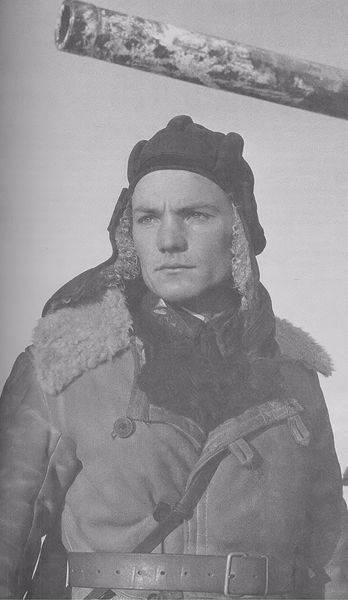
After school, Ivan Lyubushkin moved to work in Tambov, where he worked conscientiously at a brick factory. Later, together with a friend, he moved even further from his native home - in Tbilisi, where he worked in the fire department. In 1938 he joined the ranks of the Red Army, tied himself to the armed forces until the end of his life. Ivan Lyubushkin immediately began serving in the tank forces. Even before the outbreak of war on his collective farm, he could learn the profession of a tractor driver, which influenced the choice of troops. Before the war, Lyubushkin managed to graduate from the school of junior commanders.
In the summer of 1941, Ivan Lyubushkin served as part of the 15th Panzer Division, which in the spring of that year was assigned to the 16th Mechanized Corps being formed. On the first day of the war, along with the corps, the division became part of the 12th Army of the South-Western Front, and later was transferred to the Southern Front. The division received baptism of fire only in the Berdichev region around July 8. By mid-August 1941, the division had practically lost all of its material equipment and was withdrawn from the front for reformation.
The battle with the Guderian tankers near Moscow
Ivan Lyubushkin, an experienced tanker, was quickly included in the 4th Panzer Brigade formed in the Stalingrad Region, which was headed by Mikhail Katukov. By September 28, 1941, a new brigade was concentrated near Kubinka, at that time in its composition there were 7 KV tanks and 22 T-34s. Here, the team was replenished with light tanks of all types of BT, which came from the repair. At the same time, the 3rd tank battalion of the brigade had to be left in Kubinka, since he did not manage to get the material part.
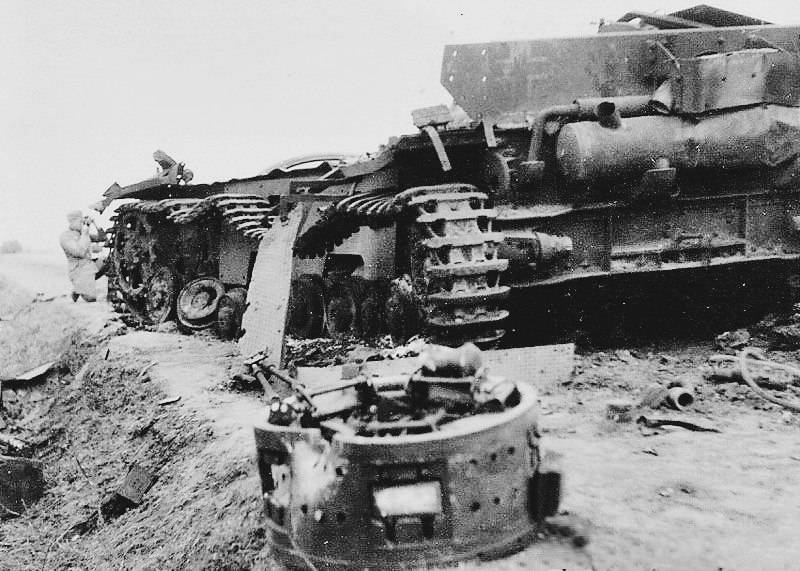
In early October, the brigade hastily reoriented onto the Orel-Mtsensk highway, along which German troops advanced for several days in an operational void. The main enemy of the Katukovites in this direction was the 4th German Panzer Division from the 2nd Panzer Group of Guderian. In this direction, the Soviet command hastily concentrated reserves to stop the advance of the enemy. Together with the 4th tank brigade of the enemy, the 11th tank brigade, the 201st airborne brigade and the 34th NKVD regiment restrained on the way from Orel to Mtsensk.
On October 6, units of the 4th Panzer Brigade detained the Germans near the village of Pervyi Voin; in the afternoon, a counterattack against the advancing German group was carried out by tankers of the 11th Panzer Brigade. Both sides suffered significant losses, while the enemy failed to move along the highway that day. The tankers of the 4th Panzer Division were forced to regroup in order to continue their breakthrough attempts on the following days. In the battle of the First Warrior, the crew of Ivan Lyubushkin distinguished himself. It is believed that in this battle the T-34 senior sergeant Lyubushkin knocked out 9 enemy tanks.
Memories of this battle fell into the front sheet, and after the war, and in the book "People of the 40s" by Yu. Zhukov. The tank, in which at that time senior sergeant Ivan Lyubushkin was a gunner, was ordered to advance to the flank in order to engage in battle with enemy armored vehicles. The commander of a tank platoon, Lieutenant Kukarkin, also entered the crew of his car in this battle. The first enemy shell hit the tank without breaking through its armor. A few moments later, Lyubushkin, who was at the guidance devices of his 76 mm gun, opened fire. Fire was opened on German tanks from a distance of about a kilometer, but quickly enough hit three enemy tanks - one after the other. Shells were delivered to the gun by all crew members. After the defeat of the fourth tank, Lyubushkin saw the German tankers abandon the combat vehicle and begin to retreat. The gunner asked for a fragmentation charge and opened fire again. Around this time, they again hit the tank, this time on board.
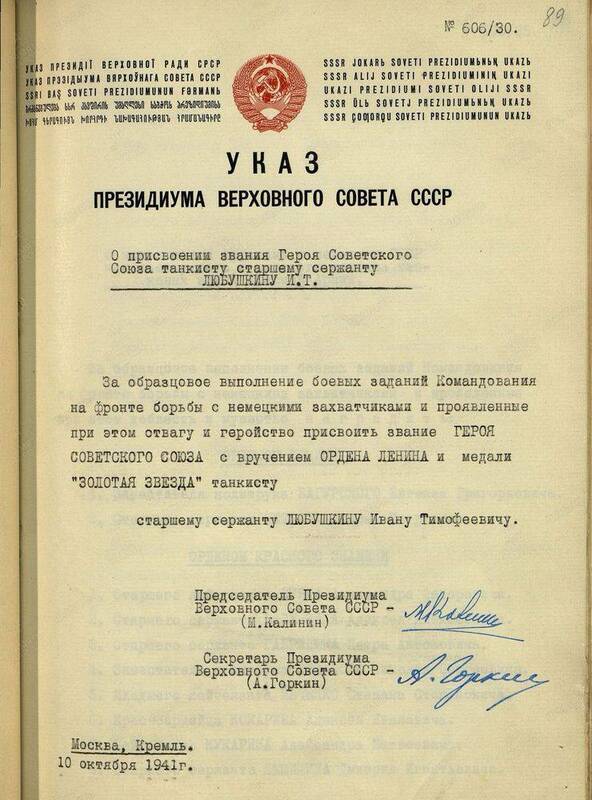
The second enemy shell, which fell into the T-34, pierced the armor of the tank and wounded the crew. Radio operator gunner Duvanov and driver Fedorov were wounded and severely stunned, clothes lit up on Lieutenant Kukarkin, Lyubushkin was also slightly injured. Having knocked down the flame from his clothes, Kukarkin climbed to help the wounded, and Lyubushkin continued to fire. At that moment, he heard Duvanov screaming that his leg was torn off. After that, Lyubushkin begins to shout to the driver Fyodorov, who had already caught his breath: “Start the engine!” The engine started up in the T-34, but it quickly became clear that the gearbox and transmission elements of the car were damaged as a result of the hit only the reverse was left. Somehow, the tankers were able to back up at minimum speed, covering themselves from enemy fire with a heavy KV tank from their brigade. On site, they had already rendered all possible assistance to the radio operator gunner, bandaged him and threw out all accumulated spent cartridges from the tank.
The crew was ready to leave the battle to begin repairing the combat vehicle when Lyubushkin saw several German tanks behind the bushes that fired on Soviet troops. At this point, Lyubushkin makes a decision: it is necessary to continue the battle. “German tanks were very clearly visible to me,” he later recalled. Tankers again opened fire on the enemy, having achieved a number of productive hits. At the same time, the Germans drew attention to the revived tank, concentrating fire on it. Again, an enemy shell tested the T-34 armor for strength. Although he didn’t break through the tower, a large piece of armor broke off from getting inside, striking Ivan Lyubushkin’s right leg, which was located on the trigger pedal.
As the tankman later recalled after the battle, the leg instantly lost sensitivity. Lyubushkin even managed to think: "That's it, I won it forever, like Duvanov." But, feeling his numb leg, he quickly realized that there was no blood, his leg was in place. Putting his leg to the side with his hands, he began to press the trigger pedal with his left foot, but quickly realized that it was inconvenient. After that, Ivan Lyubushkin bent down before each shot, pressing the pedal with his right hand, which was also not very convenient. Already at the end of this shootout, Lyubushkin set fire to another enemy tank. After leaving the battle, the tankers handed over the wounded gunner-radio operator to the orderlies, and the car went into repair, which took several hours. The mechanics regained mobility, and the tank was again ready for battle with the enemy. For this battle, the courage and courage Lyubushkin was presented on October 10, 1941 to the rank of Hero of the Soviet Union with the award of the Order of Lenin and the Gold Star medal.
The last battle of Ivan Lyubushkin
On May 30, 1942, the brigade, in which Lieutenant Ivan Lyubushkin had already served, was part of the 1st Panzer Corps and was on the Bryansk Front. The unit, especially distinguished in battles with the Germans near Moscow, became the 1st Guards Tank Brigade, many of its soldiers and commanders were among the best Soviet tankers, writing their names in history. When the German forces launched an offensive on June 28, 1942, realizing the plan of the summer strategic company on the Eastern Front, known as the Blau, the brigade was again destined to join the battle. Already in the evening of the same day, the Soviet command decides to launch a counterattack on the flank of the attacking enemy groups, attracting for this the tanks of the 1st tank corps, which was supposed to attack the enemy from the north from the area of the city of Livny.
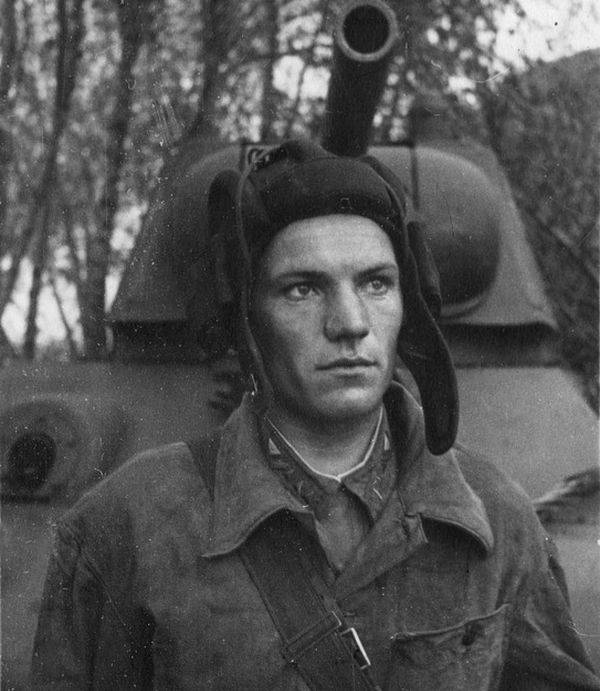
In the battle that took place near the village of Muravsky Shlyakh (abandoned today) near the city of Livny, Orel Region, the 24-year-old guard, Lieutenant Ivan Lyubushkin, died with his tank. A participant in those events, the Soviet tank crewman Anatoly Raftopullo, the battalion commander in the 1st Guards Tank Brigade, recalled that this was a head-on tank battle, in which Alexander Burda's battalion participated. At the same time, Soviet tankers had to turn around from a marching column into battle formation already under enemy fire.
From the side, due to the railway along which Soviet tanks moved, artillery hit them, Hitler tanks shot in the forehead, and from the air attacked the positions of Soviet troops aviation. According to Raftopullo, the crew of Lyubushkin managed to deal with one of the enemy’s weapons when a direct bomb hit the tank (with a high degree of probability this could also be a shell). The hit led to serious damage to the tower, a fire and, apparently, the detonation of the ammunition. Lyubushkin and the gunner were killed immediately, the gunner was seriously injured, only the mechanic driver Safonov was left unharmed, who managed to leave the tank before it was engulfed in flames.
T-34 Lyubushkina burned before his eyes fellow soldiers before sunset, while the tankers could not do anything, watching with an anger of weakness in his eyes. Later, in the burnt down thirty-four they will find only the burnt-out gun of the tank commander, all those who remained in the combat vehicle turned to ashes. The report on losses, which was submitted by the 1st Guards Tank Brigade in the column "where buried" indicates: burned in the tank. By the time of the death, Lyubushkin’s account officially counted 20 damaged tanks and self-propelled guns of the enemy, most of which were in battles near Moscow in the fall and winter of 1941.
The memory of the hero-tanker was immortalized by his fellow soldiers when, by order of the tank brigade of May 7, 1943, Lieutenant Ivan Timofeevich Lyubushkin was forever enlisted in the list of personnel of his native unit. Later, after the war, his name in the cities of Oryol and Livny will be named streets, as well as Sergievskaya secondary school in the native for the hero of the Tambov region, where information about the countryman is carefully stored in the local school museum.
- Yuferev Sergey
- Soviet tank aces. Konstantin Samokhin
The brave tankman Alexander Burda. Hero of the Great Patriotic War
Nikolay Andreev. Hero Tanker of the Battle of Stalingrad
Pavel Hudz. One KV against eighteen enemy tanks
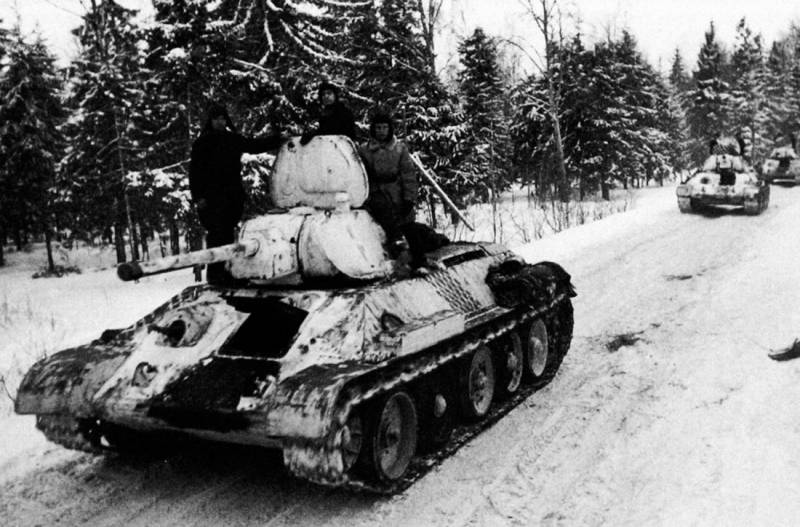
Information